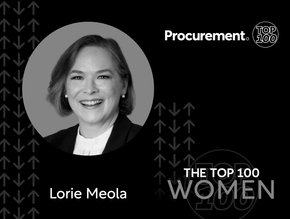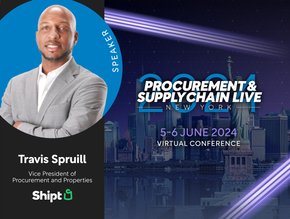Tesco: Using operational research to reduce waste

Seb Hargreaves, Executive Director of The OR Society explains to Procurement Magazine how the methods have been used to gain competitive advantage thanks to intelligent use of data and analytics
What is operational research?
Retail is one of the most competitive sectors especially during the peak festive season, and creating a competitive edge is key to success. Some businesses are turning to a powerful and strategic business tool, Operational Research (OR), to transform how operate and solve complex issues.
Often termed 'the art and science of decision making' OR combines advanced mathematics, data analytics, and human insights to tackle intricate business challenges. Originating from World War II, ORs roots trace back to scientists and engineers innovating strategies that optimised military operations. Analysing data, mapping processes, simulating scenarios, and planning optimal routes became pivotal in minimising military losses and ensuring mission success. Today, retailers like Tesco are using OR techniques to extract value from data, model intricate systems, and reduce risks.
Tesco, the UK’s largest grocer, operating over 2,700 stores used OR solutions to meet the daily challenge of expiring stock of both food and non-food items and maximise all potential sales revenues. Tesco’s data science team developed an optimum pricing strategy for items about to be removed from the shelves and the results were phenomenal.
How can it help inform retailers and reduce waste within their procurement operations?
A key step in Tesco’s value chain is what happens at the end of a product’s lifecycle. This is the last opportunity to sell an item to a customer or donate it to the community, so it does not go to waste.
Like most retailers, the company discounts items close to being removed from the shelves. This process is applied across Tesco’s entire product range, from general merchandise and clothing to fresh food. In particular, food items are reduced in price as they get closer to expiry to sell them before they go to waste. Finding an optimal reduction strategy is a major challenge though for every retail business and Tesco was no different. The question to answer was: how much should the price be reduced? Reduce too little and the item simply will not sell but reduce too much and the sale might become a net loss for the retailer. This task was given to Tesco’s data science team who used OR to develop a novel multi-stage Clearance Pricing Optimisation System and deployed it across all Tesco’s in the UK where it is applied to 100,000s products annually.
How can businesses address the problem?
The challenge of expiring stock of both food and non-food items is something Tesco faces daily. The team needed to develop a clearance strategy to increase revenue, and most importantly, decrease waste. Tesco employs a product line specific, multi-phase reductions strategy to reduce waste and recover revenues from soon-to-expire stock. The time involved varies depending on the business area. For example, fresh food items enter a pre-defined three-stage reduction process 24-48 hours before they reach their sell-by-date, with tens of thousands of unique products reduced each year.
But for non-food items covering electronics, home and entertainment, and clothing it can involve a four-stage reduction process, where each stage could last weeks. This means tens of thousands of unique sub-problems: predictions and then optimisations, which scientifically makes it hard and requires diverse types of expertise. Finally, packaged food items with a long shelf life but highly seasonal demand (e.g.Christmas, Easter, Halloween, and themed items) enter a pre-defined two-stage reduction process after their peak demand. Every seasonal event sees hundreds of unique product reductions across most stores.
Although all these time frames are different, the challenge is the same. Tesco must calculate an optimal multi-phase pricing strategy, that at each stage further reduces the price of the items as they approach their expiry date. However, this is easier said than done. The team identified that the solution was likely to involve solving two sub-problems – prediction and then optimisation, which scientifically makes it hard and requires different expertise. Historical data is not always available to build robust prediction models. Also, given the scale of the task, driven by the high number of products and stores, the optimisation problem is computationally extremely intensive.
How can organisations implement the techniques to manage their supplies?
Deploying OR techniques were needed to help overcome these challenges and enable the team to build a solution for an optimal pricing strategy that could be applied across all business categories. The key objectives the solution needed to meet were:
- Clear excess stock by a specific date;
- Increase revenue by finding the optimal discounts
- Reduce operational costs and provide further insights of in-store processes.
The team developed the system by first modelling how they expected demand to react if a specific reduction were set – this was the prediction phase. Secondly, they chose optimal reductions that would optimise revenue maximisation – this is the optimisation phase. Finally, the results are passed to the business – known as the deployment phase.
What results have Tesco seen from using the method?
Tesco was delighted the solution achieved all its objectives and was a remarkable success. The largest impact of the algorithmic solution has been with fresh food items. Tesco has reduced the number of expiring fresh food items going to waste by 5% which prevents millions of fresh products from being wasted every year.
At the same time, it increased the revenue generated by 1.5-13% across multiple food and non-food product lines. As a result of this successful project, Tesco was awarded the OR Society’s President’s Medal in 2022 for this work. By using OR to solve complex problems, make cost savings, and improve decision-making, Tesco has been able to address a problem faced by every retail business. With two conflicting objectives to not only increase revenue but also reduce waste developing a solution that achieves both is a real game changer.
Read more about Tesco's Sustainable Livelihoods sourcing strategy.
Make sure you check out the latest edition of Procurement Magazine and also sign up to our global conference series - Procurement & Supply Chain 2024
**************
Procurement is a BizClik brand
- ‘Plan for Better’ J Sainsbury and sustainable procurementSustainable Sourcing
- Co-op Group’s new CPO Imran Raul begins roleProcurement Strategy
- Data emerging as third category for procurement: AENDigital Procurement
- Dan Mitchell—Driving grocery supply chain accuracy with dataProcurement Strategy






